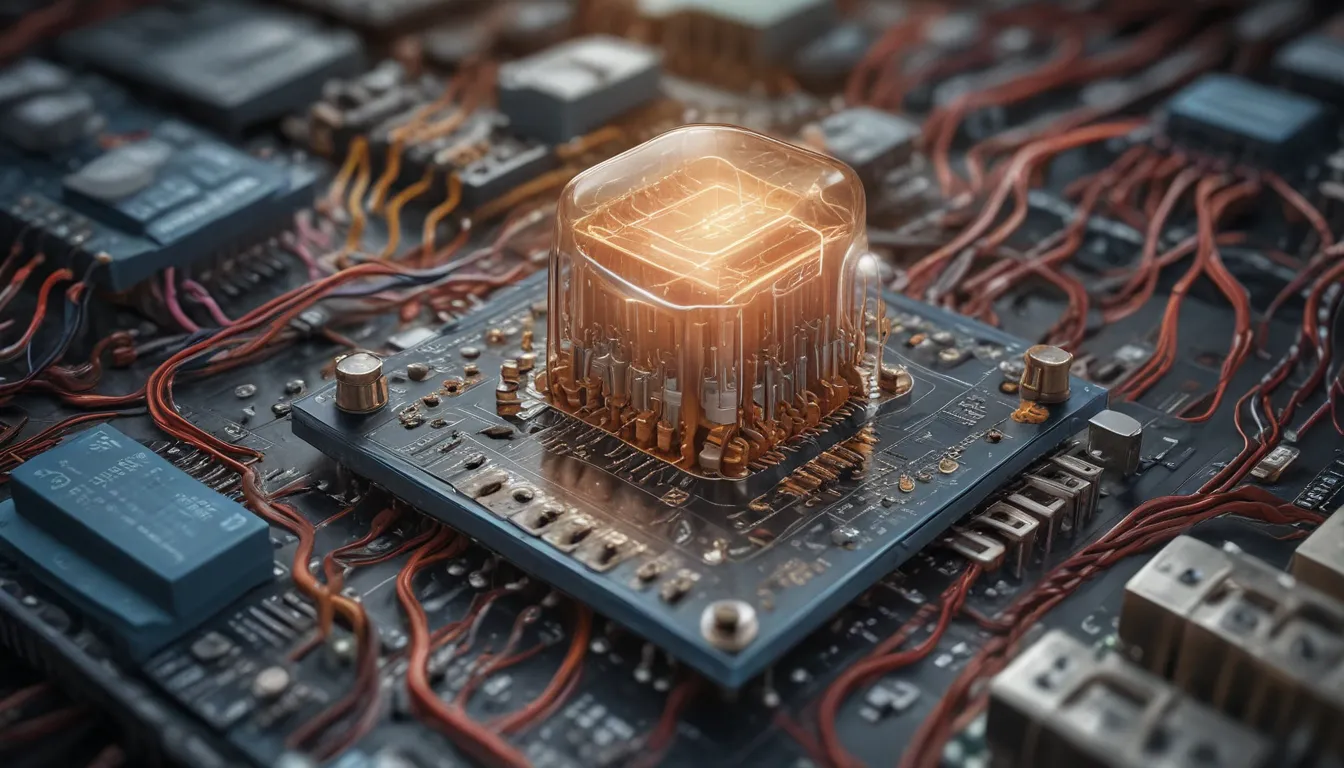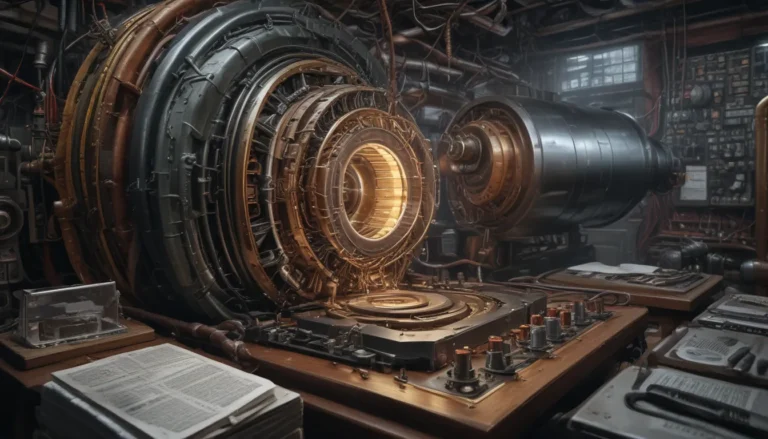A Note About Images: The images used in our articles are for illustration purposes only and may not exactly match the content. They are meant to engage readers, but the text should be relied upon for accurate information.
Parallel circuits are an essential component of everyday life, playing a crucial role in powering our homes, gadgets, and devices. While many may not realize it, these circuits are the backbone of modern electrical systems, ensuring efficient electricity flow. Delving into the world of parallel circuits can deepen our understanding of the electronic devices we interact with daily. In this article, we will explore 19 captivating facts about parallel circuits, shedding light on their importance and applications in various industries. Let’s embark on an electrifying journey to uncover the secrets behind parallel circuits!
The Basics of Parallel Circuits
A parallel circuit is an electrical circuit where components are connected in a way that allows current to flow along multiple paths simultaneously. This setup is commonly seen in household wiring, electrical appliances, and automotive systems.
The Marvel of Voltage Distribution
In a parallel circuit, each component receives the same voltage across its terminals. This ensures uninterrupted operation even if one component fails or is disconnected.
Sharing Current Efficiently
One of the key features of parallel circuits is the division of current among branches or individual components. This enables each component to draw only the required amount of current, preventing overload and ensuring efficiency.
Power Multiplication in Parallel Circuits
An interesting facet of parallel circuits is their ability to increase overall power capacity. When components are connected in parallel, the total power available is the sum of individual power ratings.
Ease of Installation and Modification
Parallel circuits offer the advantage of easy installation and modification. Components can be added or removed without affecting the operation of other components, making them convenient for various applications.
Illuminating Lives with Parallel Circuits
Parallel circuits are commonly used in lighting fixtures and lamps. In this setup, if one light bulb burns out, the others remain lit due to the independent path of current flow.
Integration with Everyday Electronics
Many electronic devices like televisions, computers, and smartphones utilize parallel circuits for powering various components. This ensures reliable operation and efficient electricity use.
Balancing Resistance with Parallel Resistors
Parallel resistors can balance overall resistance in a circuit. Adding more resistors in parallel decreases total resistance, allowing for higher current flow.
Parallel Circuits in Residential Wiring
Residential wiring extensively utilizes parallel circuits to enable multiple outlets and appliances to function simultaneously without affecting individual devices’ voltage supply.
Fault Tolerance Benefit
Parallel circuits offer a level of fault tolerance. If one component fails, others continue to function normally, preventing a complete loss of power.
Beyond Electrical Systems
Parallel circuits are not limited to electrical systems; they are prevalent in plumbing and hydraulics, facilitating efficient distribution and regulation of fluid flow.
Amplifiers and Parallel Circuits
Audio amplifiers often incorporate parallel circuits to enhance sound quality and increase power output. Connecting multiple transistors in parallel allows for higher currents and better performance.
Utilizing Parallel Circuits in Renewable Energy
Parallel circuits play a vital role in solar power systems, where multiple solar panels connected in parallel increase current capacity and maximize energy output.
Quick Troubleshooting in Parallel Circuits
Identifying faults in parallel circuits is often easier compared to series circuits. Isolating each component or branch simplifies the process of addressing any issues that may arise.
Festive Cheer with Parallel Circuits
Christmas lights commonly use parallel circuits, ensuring that if one bulb burns out, others will continue shining brightly, spreading joy and festivity.
Ensuring Reliable Networks
In computer networks, parallel circuits manage data transmission, providing redundancy and fault tolerance for reliable communication between devices.
Emphasizing Efficiency
Parallel circuits are known for their high efficiency. By dividing current among multiple paths, each component can operate optimally, minimizing power wastage and heat generation.
Automotive Wiring Applications
Automobile wiring systems employ parallel circuits to power various electrical components like headlights, taillights, and interior lighting, enhancing safety and control.
Unparalleled Flexibility
Parallel circuits offer unmatched flexibility and adaptability, found in various applications from simple household circuits to complex industrial machinery, ensuring reliable and efficient electrical distribution.
Conclusion: Unraveling the Wonders of Parallel Circuits
Undoubtedly, parallel circuits are an integral part of our daily lives, supporting the functionality of numerous devices and systems. By exploring the captivating facts about parallel circuits, we have unveiled their unique properties and advantages. Whether you are an electrical engineer, a physics enthusiast, or simply curious about electronics, learning about parallel circuits can be both educational and fascinating. With widespread applications and endless possibilities, parallel circuits continue to shape and improve the world around us, making our lives more convenient and efficient.
FAQs
- What is a parallel circuit? A parallel circuit is an electrical circuit where multiple components are connected in a way that allows each component to have its own separate connection to the power source, enabling independent current flow.
- How does a parallel circuit differ from a series circuit? In a parallel circuit, current has multiple paths to follow, whereas in a series circuit, it has only one path. This results in the voltage across each component remaining constant in a parallel circuit and being divided among components in a series circuit.
- What are the advantages of using parallel circuits? Parallel circuits offer fault tolerance, uninterrupted operation in case of component failure, and independent operation of each component, making them suitable for applications requiring multiple devices to work simultaneously.
- Can total resistance in a parallel circuit be greater than individual resistances? No, the total resistance in a parallel circuit is always less than the smallest individual resistance, as multiple paths for current flow reduce overall resistance.
- Where are parallel circuits commonly used? Parallel circuits find applications in household electrical wiring, lighting systems, computer circuits, electronic devices, and industrial machinery for efficient electrical distribution.
As we unravel the captivating world of parallel circuits, let’s remember that these circuits are just the beginning of a fascinating journey into electronics. Exploring fundamental laws like Kirchhoff’s Laws and Ohm’s Law can deepen our understanding of current, voltage, and resistance, while delving into electrical engineering opens doors to practical applications and innovative solutions. Get ready to be amazed by the incredible power and potential of electronics as you continue learning and exploring the exciting realm of technology!
Was this page helpful?
Our dedication to delivering reliable and engaging content is the cornerstone of our work. Each fact on our site is contributed by users like you, ensuring a diverse range of insights and information. With diligent editorial reviews, we uphold the highest standards of accuracy and credibility in every submission. Trust in our commitment to quality and authenticity as you engage with our content and expand your knowledge.






